Hiking with your dog is great fun, and has benefits for you both. Sharing an activity strengthens your bond. Exercise is good for you both. The joys of hiking with your dog are many! We want to have fun and be safe, so we need to think about whether our dog is going to be on or off leash.
Off Leash Hiking–Is It For You And Your Dog?
On or off leash hiking is something many folks have strong opinions on. And that’s okay. You need to decide what you are comfortable with, and what will work for you and your dog. Many people would never be comfortable hiking
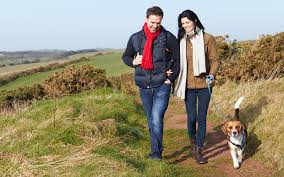 with their dog off leash–and what fun would hiking be if you were nervous about your dog? There are many areas where your dog would not be safe off leash while you were hiking–near roads, in areas with predators, in areas with hazards (cliffs, quicksand, etc.).
with their dog off leash–and what fun would hiking be if you were nervous about your dog? There are many areas where your dog would not be safe off leash while you were hiking–near roads, in areas with predators, in areas with hazards (cliffs, quicksand, etc.).
Others (myself included) find that their dog’s enjoyment running off leash is the best part of hiking! Of course, that means I have to select my hiking areas with that in mind. I only go where I feel my dog will be safe, and
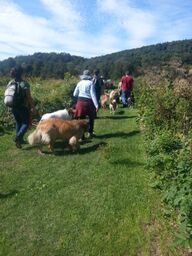
where I won’t be a nuisance to others. I choose areas where there isn’t a lot of hiking or dog traffic (I’m lucky that I live where I can find such spots). If I see another hiker or dog, I immediately call my dogs to me and either have them sit by me, or put them on their leashes. Unless, of course, it is people or dogs we know.
Group hikes with multiple dogs that get along are probably the best fun of all! Many communities have meet up groups of people who like to hike with their dogs. Check out your community, and consider starting one if there isn’t such a group already available.
You Need An Awesome Recall!
All dogs need a reliable recall! It can be a lifesaver, even for the dog you never plan to walk off leash. Things happen–your pooch slips out the door, the leash gets pulled out of your hand–there may be a time your dog is loose without you intending it.
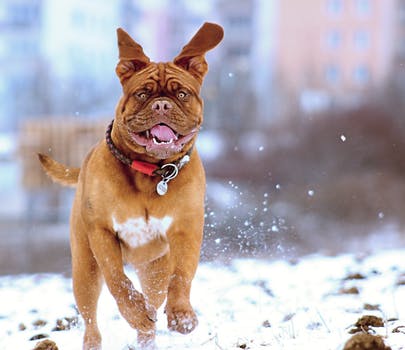
Teaching your dog to come flying to you every time you call him is mostly teaching him that coming when called ALWAYS means awesome things will happen! So how does this work?
- Train the recall where he will come to you.
- Be upbeat and cheerful.
- Find a great reward.
- Reward generously
- Gradually make it more challenging.
Train “Come” Where He Will Come To You!
You can’t teach a dog to come if he won’t come! I know that sounds odd, but if your dog is having a great time running around, it isn’t the time to try to train the recall. The best place to start is in the house or perhaps your yard. Somewhere where there aren’t more interesting things to do.
After the initial training, when he has realized that coming to you is great, you can move to areas with a bit more distraction. It is a gradual process. We want him learning to come each and every time, not practice ignoring you! Your goal is that he will learn to come eagerly, even when he is running around having a great time. Because coming to you is the best thing of all!
Be Upbeat And Cheerful!
We want our dogs thinking coming when called is great! So sound as if it will be! As soon as we sound irritated or grumpy, we become less inviting. Yes, your dog may come, but it isn’t going to develop the recall we want. We want the dog running to us when called even if he is out of sight. For that, he has to trust that it will be a wonderful thing to come!
Find A Great Reward!
Experiment a bit and see what your dog really loves. Is it treats? For training come, have treats he really, really loves. Not a bit of biscuit, but maybe cheese or meat or the very best treats ever. And that is for him to decide. The fact that he eats a treat doesn’t necessarily mean that it is “reward grade”. You want the treat that he is super eager for.
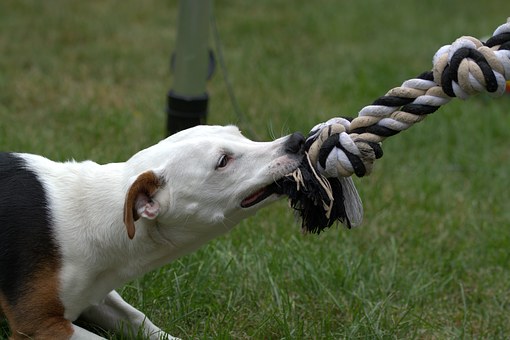
Is it toys? My favorite reward for teaching come is a tug toy. Of course, that is for the dog who loves playing tug. I like it because playing tug for a minute means the dog is totally engaged with you for that minute. If your dog prefers a ball, that also works. Or a squeaky toy. Whatever the dog really loves!
Reward Generously!
You are trying to implant in your dog’s mind that coming when called is super awesome. That means a much more generous reward than a “good boy” and a treat.
Be enthusiastic! Reward for 15 seconds minimum. Time it–that is a long time! It means multiple treats, given one at a time, not all at once. Five treats given together counts as one treat to the dog! Five treats given one after the other is a jackpot to the dog–much more significant.
Play with the dog for long enough that it was well worth coming for. Tug for a minute, throw the ball several times (if you are working on come with a ball, be sure the dog comes all the way to you before you throw the ball the first time. I’ll have the dog come in to me, then throw the ball behind me.)
Gradually Make It More Challenging!
Start in your house. If you have more than one person in the house, make it a game. Each of you have rewards, call the dog to one person–reward generously, then tell the other person to call and reward generously. You can play this game with many people–kids love it, and it is important that your dog comes to your kids also.
Go to different rooms and have the dog running back and forth practicing coming. When the dog is good at the game, which usually takes no time at all, try hiding and calling the dog. He ran to someone else, and you move to a different room, or behind a door before you call again. Start easy, but gradually make it harder. You can hide in a closet, or duck behind a counter. Kids really get into this. Just be sure the dog gets rewarded promptly when he “finds”. If he is having trouble finding you, make a noise to help him until he gets really good at it.
As your dog gets good at coming in the house, move to the yard, then on walks. You can work on it on leash. Let the dog wander away to sniff, then call him and reward generously. At first, avoid calling him when he is super distracted. Set him up for success by working at his level. As he gets more enthusiastic about coming, you can call him when he is more distracted. This works even on a 6′ leash. Remember, we are working on having our dog think coming when called is awesome, even if it was only a few feet.
Let’s Go Hiking
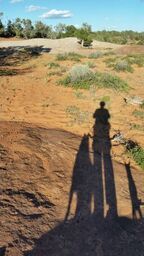
Some dogs naturally stay near their people when hiking. That is awesome. Other dogs have a larger ranging distance, and other dogs are off and running and long gone.
For dogs that naturally stay near, or in the vicinity, I like to practice recalls during the walk or hike. At first, when the dog isn’t too involved with a smell or whatever. I call the dog to me enthusiastically, and reward generously. Sound familiar? Then gradually I wait until the dog is somewhat involved with a smell or whatever, then call.
If I really think the dog won’t come–he flushed a rabbit and is in hot pursuit–I don’t call him. I don’t want to practice having him not come! Our goal is that the recall will get so good you can call him off that rabbit! But that takes a lot of practice with easier recalls, until the “Rover, Come” conjures up images of treats or play so exciting that the dog will leave what he’s doing and come flying to you.
That means always having treats or a toy readily accessible. I never go hiking without treats in my pocket, and a toy in my back pocket. I want to be able to reward my dog for responding to my cues, especially when I’m out and about.
What about that pooch that takes off and is long gone? You may be able to turn him into an off leash hiker, but it isn’t a given. Get a long line. Either a 15′ or longer training leash, or rope you can attach to his collar or leash.
When you go walking or hiking, try making yourself a more important part of the walk. Toys are great for this if your dog likes them, otherwise treats will work. Practice those recalls, at first when he isn’t too distracted, then gradually with a higher level of distractions. Be enthusiastic and reward generously. At first your runner may not want the treats or toy–he wants to run! But most dogs will start taking treats or playing when they realize that they aren’t going to be loose to run, and that after coming to you and engaging, they will get to go back to the important job of sniffing.
For this dog, the runner, you have two goals. One is to get a great recall, and the other is to become more important to him while on a walk or hike. I wouldn’t let him off the leash or long line if I was worried he would take off and not be back! But if I felt he would stay in the area, and he had a good recall (which may take weeks to get while hiking), I would try him off lead.
Every time he came near me, I’d pop a treat in his mouth! I would have super duper treats–cheese or meat–and he’d get one whenever he came close.

Not because I’d called him, just because I want him to include me in his walk. If he was a dog with a strong toy drive, I’d have periods or tug or fetch interspersed in the walk. Again, to make me and my games a part of his walk. And I would always be upbeat and excited when he came back, so he would feel good about it and make checking in a part of the hike.
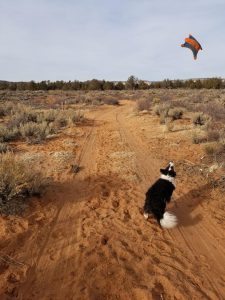
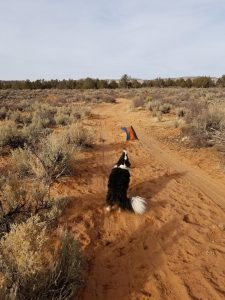
If every time he comes near you, he is greeted with “What a good boy! Yeay!” and a treat or play session, he’ll start including you in his walk and either stay closer, or do more frequent check-ins. You’ll be more than the chauffeur who drives him back and forth, you’ll be part of the fun.
Know Where Your Dog Is With A Tracking Collar
If you are a hiker, and want your dog to have the freedom of going off leash, I highly recommend having a tracking collar. I have used one for years, and love it. There are a few brands out there. I use the Garmin Astro.

I have used other systems, but they relied on cell service. Where I live, there are large areas with little or no cell coverage. There are a few systems that rely on GPS satellites. The Garmin Astro is the only one I’ve tried, and it works really well for me. Check out my Garmin Astro 430 Review.
The advantage is that I can look at the handheld unit and see where each of my dogs is, how far away he is and if he’s moving or still. That gives me great peace of mind, even though my dogs all stay around (basically) when I hike, and come instantly when I call them.
I highly recommend a tracking collar if you hike with your dogs off leash. The GPS unit will also show you where you are and have been, and prevent you from becoming lost! If you use one, leave a comment about what system you use, and how you like it.
On Or Off Leash Hikes?
As I said at the beginning of this post, this is a personal decision. What is right for me and my dogs, may not be right for you and your dog! The most important consideration is safety. Is it an area that is safe for your dog? Does your dog have the training that he needs to be safe?
The next most important consideration is your comfort level and beliefs. If you are not comfortable with your dog off leash, don’t do it! Hiking should be fun. Your dog will still have great fun on leash–he’s with you, and there are great smells to check out!
Remember to consider others. If you meet other people or dogs, don’t assume they want to meet your dog. Call your dog back to you and leash up, it’s only good manners (and safer). One of my pet peeves in life is people allowing their dog to run up to mine, saying “Don’t worry. He loves everyone.” That doesn’t mean my dog does! One of my dogs doesn’t like strange dogs running up to him when he’s on leash.
Have A Good Hike With Your Dog!
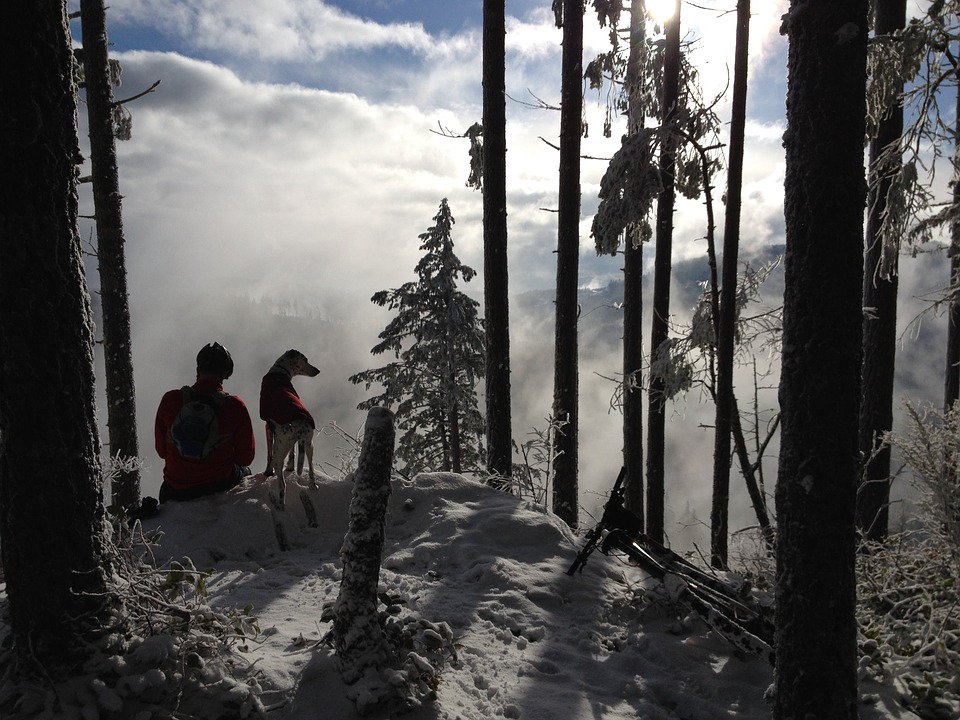
Here’s wishing you many good hikes with your dog, on or off leash. It is great exercise and mental stimulation for your dog (and you). Feel free to leave a comment–I’d love to hear about your hikes. Or you can email me directly at jane@goodtimesdogtraining.com.
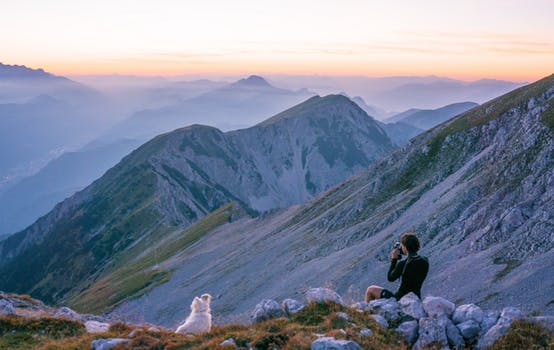
What a great website, I really enjoyed it! This topic is close to many people’s hearts and your content is very interesting and informative, thank you.
Thanks, Kim. I appreciate the feedback.
This is such a beautiful and thorough article about hiking with a dog. Definitely a lot of good points to consider when going for a hike and I like the rewarding approach. Thank you Jane for your recommendations.
The dogs like the rewarding approach, also! I love the hiking itself, but also the chance to strengthen the bond and communication with my dog. Thanks for the comment.
Great website. I really enjoyed reading this article.
Thanks. I’m glad you enjoyed it!